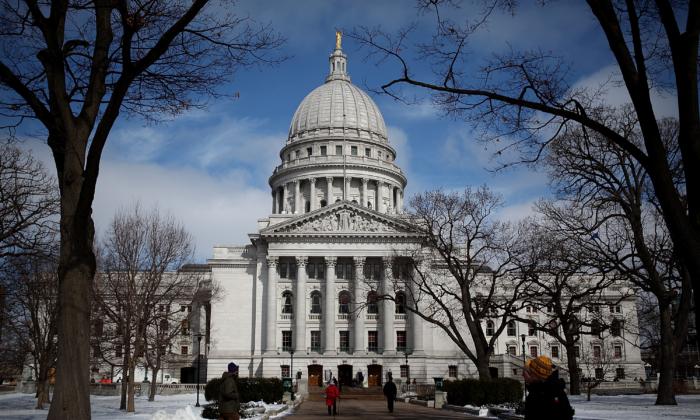The Republican Assembly leader in Wisconsin has announced that he’s created a panel to investigate impeachment criteria for a state Supreme Court justice.
Assembly Speaker Robin Vos announced on Sept. 13 that the committee would be investigating the possible impeachment of Justice Janet Protasiewicz due to comments she made about redistricting during her campaign and nearly $10 million in donations she received from the state Democrat Party.
The justice, who played a pivotal role in shifting the court to a 4–3 liberal majority, is now facing pressure to recuse herself from any cases involving redistricting.
The Republican party has taken a strong stance, asserting that unless Justice Protasiewicz voluntarily withdraws from redistricting cases, they will pursue impeachment proceedings.
The GOP move highlights the contentious nature of redistricting and the significance it attaches to judicial impartiality in such matters.
The impeachment criteria panel being created by Mr. Vos will consist of three former Wisconsin Supreme Court justices whom the Speaker did not immediately name.
Mr. Vos stated that they were not being compensated and that he anticipated their work to be completed within a few weeks.
Democrat leaders have denounced this threat as “political extortion” and are mobilizing voters in districts won by the new justice to exert pressure on Republicans to back down.
Altering the composition of the Wisconsin Supreme Court could also impact the 2024 presidential election in the perennial battleground state.
Four of the state’s past six presidential elections were determined by less than one percentage point.
In 2020, the state Supreme Court—which was then controlled 4–3 by conservatives—came within one vote of overturning current Democrat President Joe Biden’s victory over President Donald Trump by nearly 21,000 votes.
With majorities of 64–35 in the state Assembly and 22–11 in the Senate, Wisconsin Republicans are intently focused on the future, particularly on the political maps they drew that helped them achieve near-veto-proof supermajorities that could be in jeopardy of being overturned by the Supreme Court’s new Left-leaning majority.
Two petitions challenging what Democrats asserted were unconstitutional gerrymandered maps were filed the first week after the new justice was seated.
The state Supreme Court has not yet determined whether to hear either case.
Republicans, and even some Democrats—during the last time they held a majority in the legislature 14 years ago—have resisted calls to relinquish their authority to draw the electoral district lines.
Michigan, a neighboring state, serves as an example of the potential outcome of independent redistricting, which Democrats largely support in Wisconsin.
After the 2010 Census, Republican legislators in Michigan, who then controlled the redistricting process, designed maps that would control the state’s districts for the next decade.
In 2020, Democrat legislative candidates received a slight majority of ballots, but Republicans won a 58–52 majority in the Michigan House and a 22–16 majority in the Senate, which some believe was due to the way in which the district lines were drawn.
Michigan, unlike Wisconsin, allows its residents to propose their own laws or constitutional amendments and submit them to a statewide referendum.
In 2018, voters approved a citizen-led initiative to transfer redistricting responsibilities from state legislators to an independent commission.
After the 2020 Census, this commission drew the present legislative and Congressional maps.
The 2022 midterm election was the first to use Michigan’s new electoral districts, resulting in a change in the legislative leadership. Just under 51 percent of all statewide ballots were cast for Democratic legislative candidates, resulting in a 56–54 House majority and a 20–18 Senate majority.
In Wisconsin, the redistricting process cannot be altered unless legislators voluntarily abdicate their authority. Wisconsin is one of 26 states that prohibit citizens from bypassing their legislature through ballot initiatives.
As a consequence, Wisconsin’s legislative districts continue to be shaped by Republican legislators as long as Republicans continue to be the majority in the state legislature.
While Republicans have been able to maintain their large legislative majorities, voters have elected Democrats to all but one of the partisan-based statewide executive offices, such as governor and attorney general.
Additionally, they have elected a Republican and a Democrat to the U.S. Senate in statewide elections.







